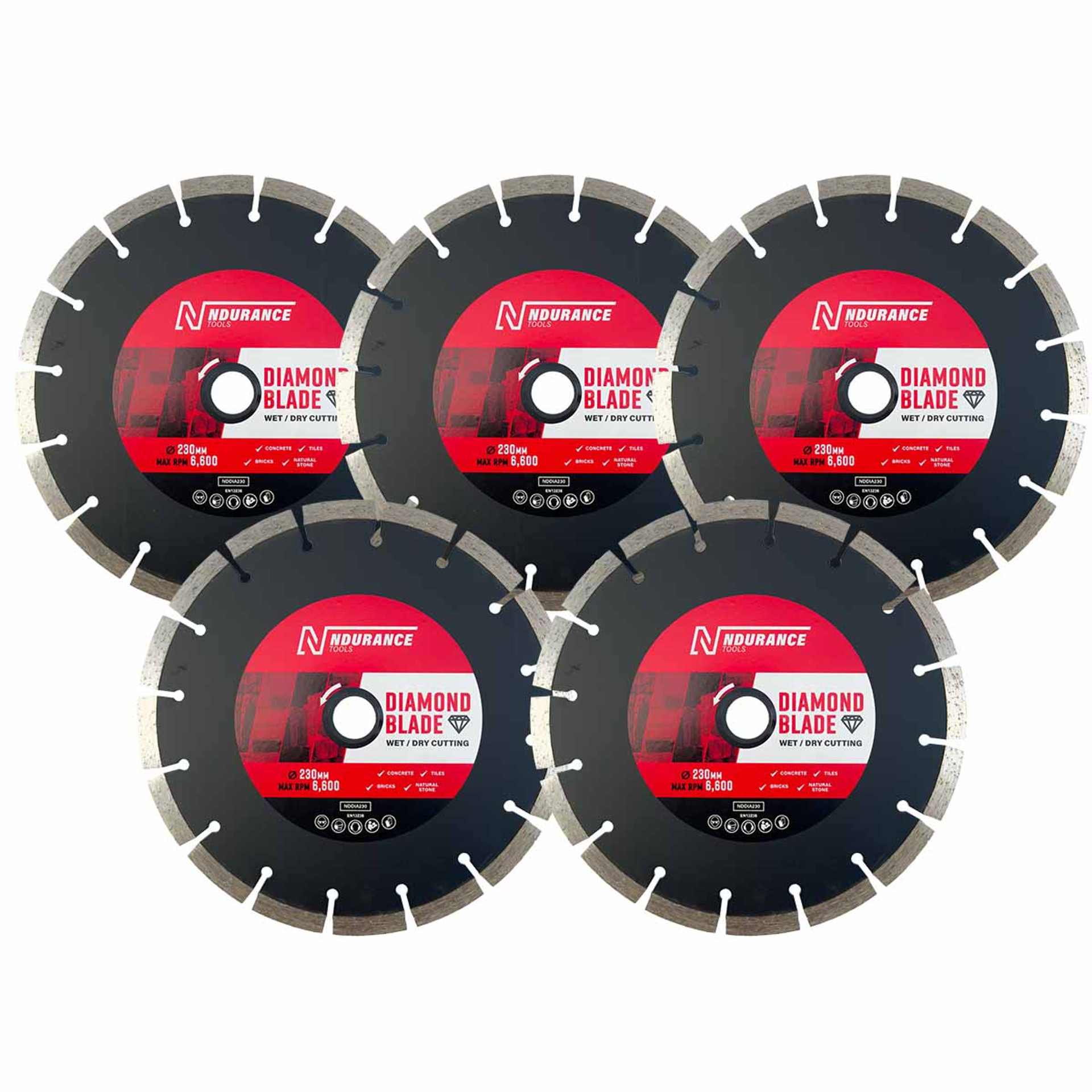Whether you’re a tradesperson or a DIY enthusiast, selecting the right cutting blade for your power tools is crucial for both safety and performance. Two of the most popular — and often confused — choices are diamond blades and carbide blades. Each is designed for very different materials and applications, and using the wrong one can lead to poor results or even damaged tools.
In this expert guide, we compare diamond-cutting blades and carbide-tipped blades, helping you make the right choice for your next project.
What Are Diamond Blades?
Diamond blades are built with synthetic diamond particles fused to the blade’s edge, offering exceptional hardness and durability. These blades are ideal for cutting concrete, masonry, tiles, asphalt, and stone — essentially any extremely hard or abrasive surface.
Key Features of Diamond Blades:
- Designed for use on tough materials like concrete, bricks, ceramic tiles, and granite
- Available in segmented, turbo, and continuous rim designs depending on the cutting task
- Ideal for use with angle grinders, tile saws, and masonry saws
- Excellent wear resistance and long lifespan when used correctly
- Often used with water (wet cutting) to reduce heat and dust
Best for: Masonry contractors, landscapers, tilers, and demolition crews who need long-lasting concrete and tile cutting blades.

N-Durance NDDIA230 General Purpose Diamond Blade 230mm x 10mm x 22.2mm (5 Pack)

Evolution D300SEG-CS Masonry Segmented Diamond Blade 300 x 22.2mm

N-Durance M5JET350 5 in 1 Multi Purpose Diamond Blade 350 x 25mm
What Are Carbide Blades?
Carbide blades, typically made with tungsten carbide-tipped teeth, are designed for general-purpose cutting, especially in woodworking, light metalwork, and plastic fabrication. These blades are widely used across building sites and workshops for their precision and versatility.
Key Features of Carbide Blades:
- Suitable for cutting wood, MDF, plywood, plastics, and soft metals like aluminium
- Offer sharp, clean cuts with minimal tear-out
- Compatible with mitre saws, circular saws, and table saws
- Durable and heat-resistant, though not as long-lasting on abrasive materials as diamond blades
- Cost-effective and easy to replace
Best for: Joiners, builders, electricians, and DIYers working on timber framing, furniture, or light renovation jobs.

Evolution M355TCT-66CS 355mm x 25.4mm 66T Mild Steel Cutting Chop Saw Blade

N-Durance TCT165PACK TCT Circular Saw Blade 165 x 20mm 24T/40T/52T (Pack of 3)

DeWalt DT10624-QZ Extreme Circular Saw Blade for Wood 165 x 20mm 24T
Diamond Blades vs Carbide Blades: Which One Should You Use?
| Use Case | Diamond Blade | Carbide Blade |
| Material Type | Reinforced concrete, paving slabs | Softwood, hardwood, MDF, chipboard |
| Tiling & Masonry | Ceramic or porcelain wall and floor tiles | Plastic piping or sheeting |
| Outdoor/Heavy-Duty Cutting | Bricks, stone, asphalt | Aluminium trims, light-gauge steel |
| Abrasive Material Resistance | Excellent for high-abrasion tasks | Suitable for general construction and light composite materials |
Performance Comparison: Diamond Blades vs Carbide Blades
Best for Materials
Diamond blades are the preferred choice for cutting through extremely hard materials like concrete, masonry, and ceramic tiles. Carbide blades, on the other hand, are ideal for wood, plastic, and softer metals such as aluminium.
Cut Quality
While diamond blades offer moderate to high cut precision—especially on tiles and stone—carbide blades are known for delivering consistently clean, high-quality cuts in timber and engineered wood products.
Durability
When it comes to abrasive resistance and longevity under tough conditions, diamond blades outperform. They’re built to handle the harshest materials without losing their edge. Carbide blades, though slightly less durable in abrasive environments, hold up well during daily woodworking and light metal tasks.
Cost
Diamond blades come with a higher upfront cost due to their specialised construction, but they often pay off in lifespan when used properly. Carbide blades are more budget-friendly and widely accessible, making them a go-to for everyday jobs.
Tool Compatibility
Diamond blades are most commonly used with angle grinders, tile saws, and masonry saws. Carbide blades are compatible with circular saws, mitre saws, and table saws—tools commonly found in most joinery and construction settings.

Abracs Tile & Porcelain Diamond Blade 230 x 25.4/22mm

DeWalt DT10300-QZ Extreme Framing Circular Saw Blade 165mm x 20mm 24T
Blade Safety and Maintenance Tips
Proper blade care and safe cutting practices not only help extend the lifespan of your diamond or carbide blades, but also ensure smoother performance, reduce the risk of injury, and improve the overall efficiency of your cutting tasks.
- Always wear appropriate PPE — gloves, goggles, and dust masks
- Let the blade cut at its own speed — avoid forcing it through materials
- Use the correct RPM and mounting system for your tool
- Clean the blade regularly and check for cracks or warping
- Choose wet or dry blades depending on the material and environment
Conclusion
The key to efficient, accurate cutting lies in choosing the right blade for the material. Diamond blades dominate in heavy-duty construction and renovation, while carbide blades remain the go-to for precision wood and metal cutting. Selecting the correct blade ensures cleaner cuts, faster work, and reduced tool wear — saving you time and money.
Need some help with your order? Our new help centre has a wide range of helpful articles and guides!
















